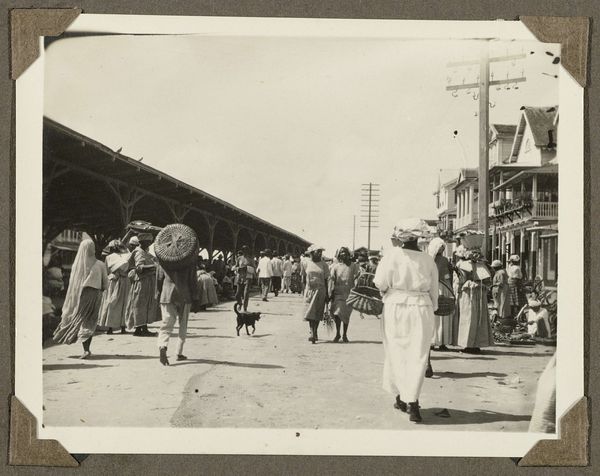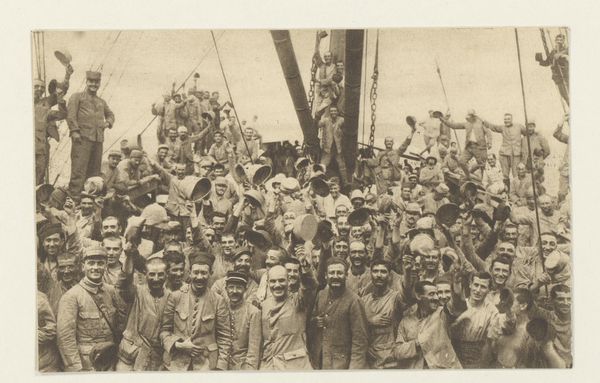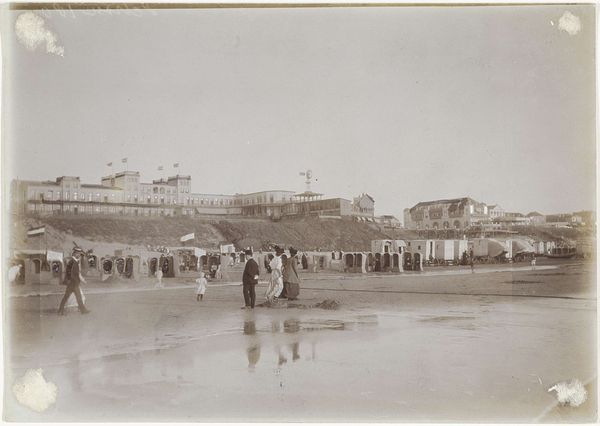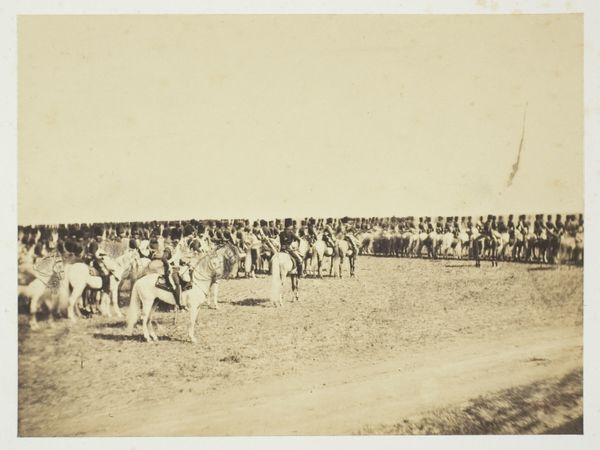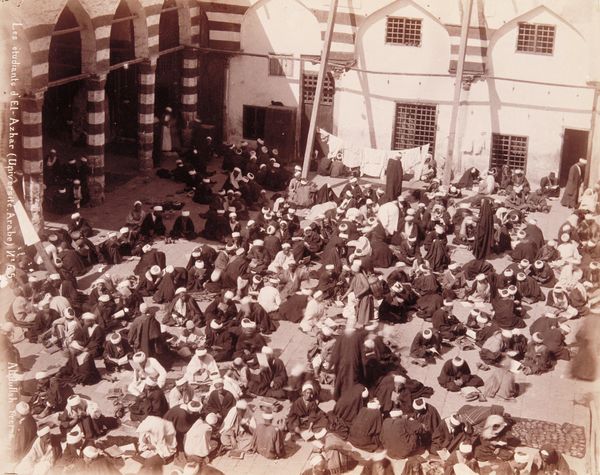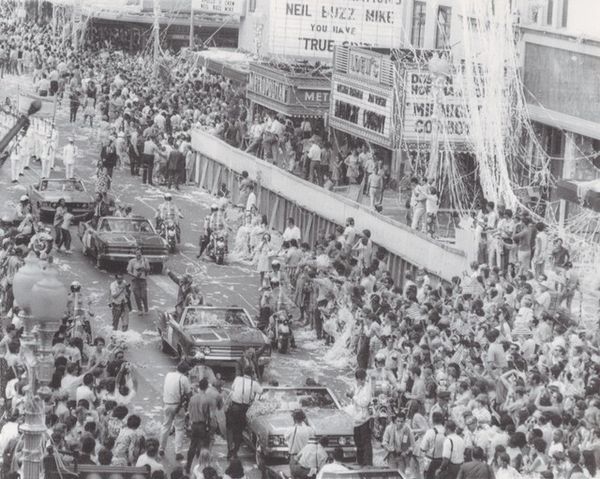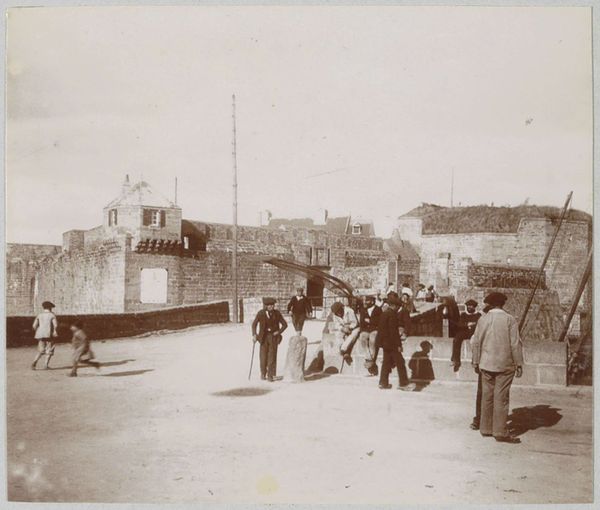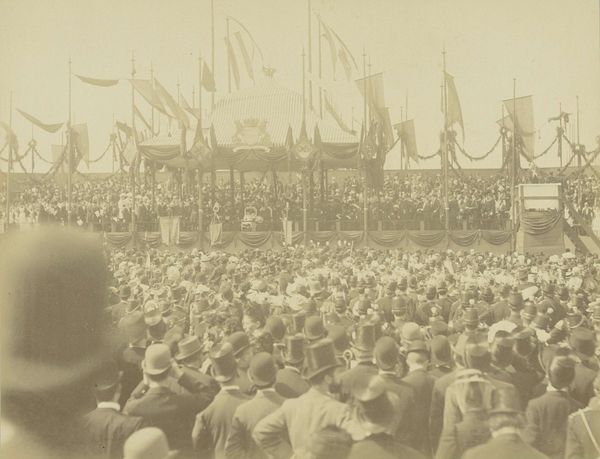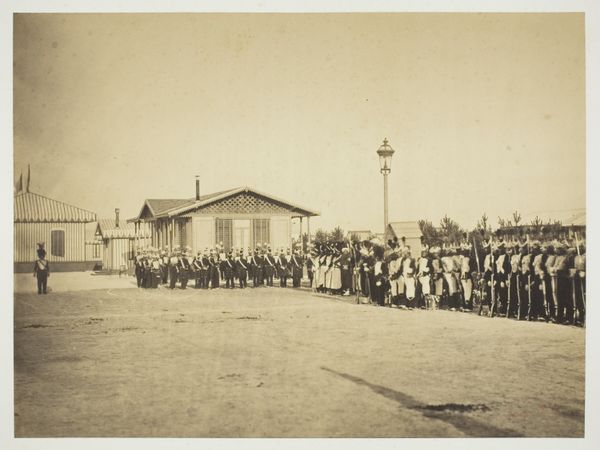
gelatin-silver-print
#
excavation photography
#
competition photography
#
surveyor photography
#
gelatin-silver-print
#
photo restoration
#
outdoor photograph
#
charcoal drawing
#
possibly oil pastel
#
outdoor photography
#
charcoal art
#
france
#
outdoor activity
Dimensions: 6 3/4 x 9 1/16 in. (17.15 x 23.02 cm) (image)7 x 9 3/16 in. (17.78 x 23.34 cm) (sheet)
Copyright: No Copyright - United States
Curator: Here we have an "Untitled" gelatin silver print from around the 20th century, part of the Minneapolis Institute of Art collection. Editor: My immediate impression is one of muted intensity. The sepia tones evoke a distant past, a world captured through a lens that feels both documentary and dreamlike. The sheer number of figures is quite compelling. Curator: Absolutely. Considering its probable origins in France during the colonial era, the photograph offers a glimpse into a highly constructed and mediated view of North African life. The sea of white robes can be seen as a kind of "Orientalist" fantasy of uniformity. Editor: From a formal perspective, I’m drawn to the way the photographer organizes the crowd. The strong horizontal lines of the architecture juxtaposed with the organic clustering of figures create a compelling visual tension. The high vantage point allows for a comprehensive view, almost like a stage setting. Curator: Exactly, this framing performs a specific power dynamic. Whose gaze is privileged, and whose life is laid bare? We must consider how visual narratives can be forms of subtle, but still powerful, social control. Editor: Agreed. However, the texture is striking. I think the materiality of the gelatin silver print contributes significantly to its effect; that subtle graininess speaks volumes about age and its indexical relationship with light itself. Curator: Thinking intersectionally, what stories are obscured within these aesthetic choices? What narratives are actively marginalized to reproduce the dominant political rhetoric of the era? Who had the agency to represent and who was represented? Editor: Fair points. Thinking about composition though, note how the light and shadows dance across the scene, creating pockets of activity and drawing our eye to different points of interest. I think there is value in unpacking this light for insights, too. Curator: Perhaps through these alternative views, we can move to a deeper critical awareness, challenging established frameworks in representing other cultures. It’s always worth considering ways images reproduce bias. Editor: Precisely. In that manner we are acknowledging a work as an object with specific aesthetic values alongside historical considerations, for both are inevitably intertwined in how we come to receive and process.
Comments
No comments
Be the first to comment and join the conversation on the ultimate creative platform.
